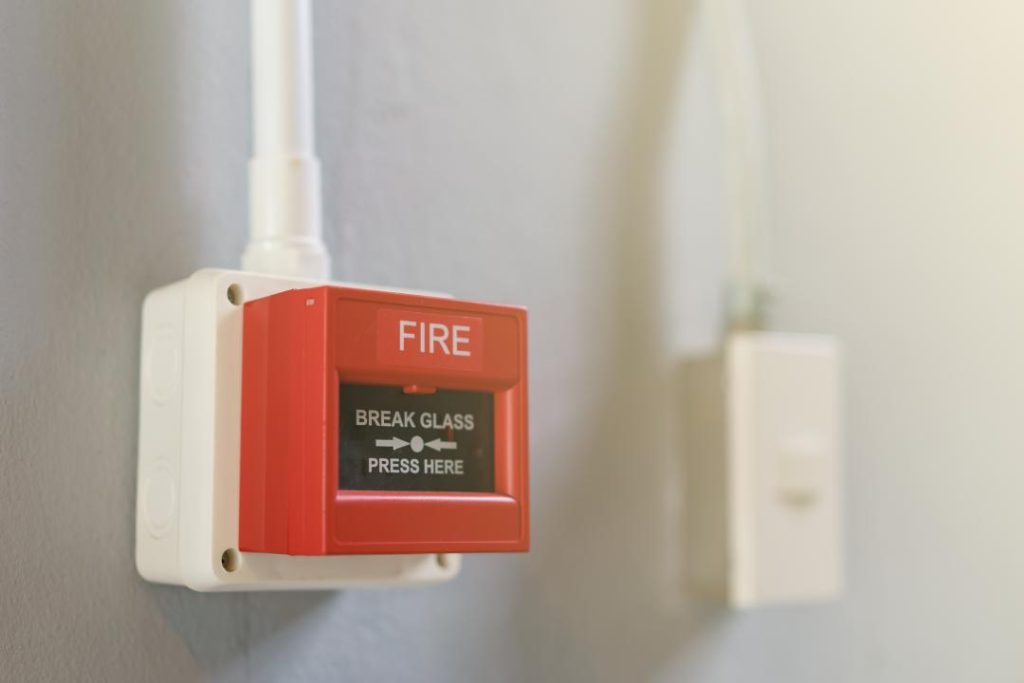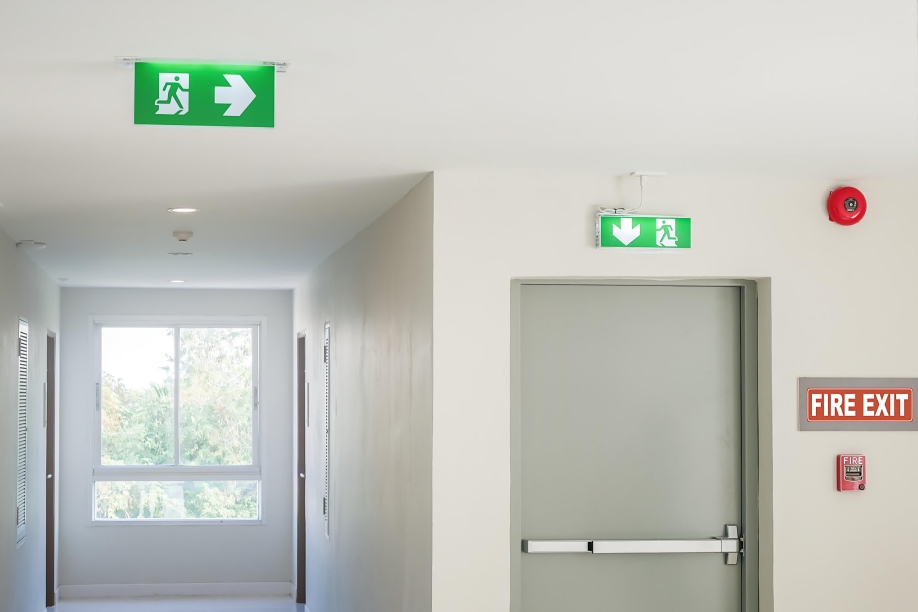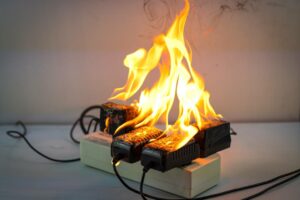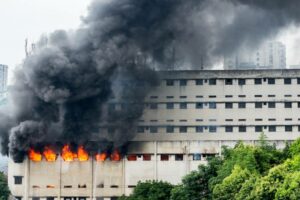Undertaking a thorough fire alarm inspection is critical in ensuring the safety of any establishment in Malaysia.
A comprehensive check not only verifies the system’s operational efficiency but also identifies potential areas of concern that could compromise safety.
This article provides an essential checklist to guide you through this crucial process, ensuring no stone is left unturned in safeguarding your premises.
Why Are Fire Alarm Inspections Important in Malaysia?
Fire alarm inspections are important to ensure that fire alarm systems are functioning properly and that they will be able to detect and alert occupants to smoke or fire.
Fire alarm inspections should be conducted on a regular basis, typically once a year or more often, depending on the type of fire alarm system and the occupancy of the building.
What To Expect During a Fire Alarm Inspection
Ensuring the safety of your premises is paramount. Here are the key steps you can anticipate during a fire alarm inspection:
Read More: Fire Alarm Monitoring System: Keep Your Building Safe
| Inspection Phase | Description | Key Activities |
| Visual Inspection | This preliminary step entails a thorough examination of the fire alarm system’s physical state, checking for any apparent signs of wear, damage, or missing components. | – Examine every component for physical integrity. – Check placements and orientations of devices. – Ensure all components are easily accessible. |
| Functional Testing | Here, the inspector will test the system’s functionality, ensuring that each component responds appropriately to stimuli. | – Activate manual pull stations to check their response. – Test smoke and heat detectors for appropriate alarms. – Examine alarms’ audibility and visibility. |
| Recordkeeping | Once the inspection concludes, a formal record will be established detailing the findings. | – Document the results of all tests and observations. – Provide feedback on any potential issues or concerns. – Offer a comprehensive report to the building owner or manager. |
Fire Alarm Inspection Checklist in Malaysia
Ensuring a comprehensive check of every component is vital for the overall functionality and efficiency of a fire alarm system. Here’s a checklist that dives deeper into the critical elements:
| Component | Inspection Details |
| Control Panel | 1. Inspect the physical condition for signs of wear or tampering. 2. Verify all indicators, lights, and buttons function correctly. 3. Ensure there’s no visible damage, like cracks or dents. 4. Check battery backup systems and power sources for any issues. |
| Manual Pull Stations | 1. Confirm they are easily accessible and not obstructed. 2. Ensure protective covers are intact and not damaged. 3. Check their location, ensuring they’re placed at required intervals and in easily accessible areas. |
| Smoke Detectors | 1. Visually ensure that detectors are free from dust, cobwebs, or any blockages that might impede their function. 2. Test them using a smoke detector tester or compressed air to ensure they activate properly. 3. Check their placement, ensuring they’re located away from vents or fans that might dilute smoke. |
| Heat Detectors | 1. Check for any physical obstructions or dirt. 2. Test them using a heat detector tester or a safe heat source, ensuring they activate at the correct temperature. 3. Verify they are placed in areas where rapid temperature changes can occur, like kitchens or boiler rooms. |
| Audible and Visual Alarms | 1. Test to ensure they produce a sound that’s clear and audible throughout the premises. 2. Ensure visual alarms, like strobe lights, are bright and visible from all angles. 3. Confirm they activate in tandem with the system’s other components during a test. |
| Emergency Lighting | 1. Regularly test to ensure they activate during power outages and provide sufficient illumination. 2. Confirm battery backups are functional and can sustain the lights for the required duration. 3. Check the placement to ensure the paths to exits are clearly illuminated. |
| Exit Signs | 1. Ensure they are continuously illuminated, indicating the quickest egress path. 2. Confirm they are free from obstructions and visible from a distance. 3. Periodically check their power sources and backups to ensure uninterrupted functionality. |
Other Fire Alarm Inspection Considerations in Malaysia

In addition to the components mentioned above, it is essential to take extra considerations to ensure the optimal condition of your fire alarm system.
| Consideration | Description | Inspection Focus Points |
| Age and Condition | All fire alarm systems have a determinable lifespan, after which they may not be as effective. Systems age and can degrade over time. | – Determine the system’s installation date. – Check for wear and tear or outdated components. – Compare the system’s age against the manufacturer’s recommended lifespan. |
| Type of Fire Alarm System | Various fire alarm systems cater to different building needs, each having its unique set of features, advantages, and limitations. | – Identify the specific system type installed. – Assess if the system type matches the building’s requirements. – Check for system features and potential upgrade needs. |
| Occupancy of the Building | The building’s primary purpose and its occupants can dictate the type of system required and how often it should be inspected. Vulnerable populations may demand enhanced systems and frequent inspections. | – Determine building occupancy type. – Check system specifications against occupancy needs. – Recommend inspection frequency based on building usage. |
| Local Fire Safety Regulations | Every region can have distinct fire safety norms and standards, ensuring a baseline level of safety and compliance with local nuances. | – Confirm the system’s adherence to local regulations. – Update on recent regulatory changes, if any. – Suggest alterations to meet regional compliance standards. |
Read More: How to Perform Fire Alarm System Maintenance For Your Workplace
Common Issues Found During Fire Alarm Inspections
A well-conducted fire alarm inspection doesn’t merely verify that the system works; it identifies areas of concern or potential issues.
Over time, many consistent problem areas have been observed in various systems. Here’s a structured breakdown of these common issues and their implications:
| Issue | Description | Inspection Actions |
| Faulty Wiring | Problems in the wiring can lead to false alarms, system failures, or even fires. | – Examine all wiring for damage or wear. – Test the system to identify any electrical issues. – Ensure proper installation and maintenance of all wires. |
| Malfunctioning Detectors | Detectors can fail due to dust, dirt, cobwebs, or other obstructions, leading to reduced sensitivity or false alarms. | – Clean and test all detectors, including smoke and heat sensors. – Verify proper installation and alignment. |
| Blocked or Obstructed Exits | Blocked exit signs or emergency lights can hinder evacuation during emergencies. | – Ensure all exit pathways are clear. – Check the visibility and functionality of emergency lights and exit signs. |
| Poor Maintenance | An improperly maintained system might not function correctly during emergencies. | – Check maintenance records. – Verify the system’s last service date and outcomes. – Recommend regular maintenance schedules. |
| Lack of Training | Personnel unaware of the system’s operations can inadvertently compromise its effectiveness. | – Confirm training records of the staff. – Recommend training sessions if necessary. |
| Incorrect Programming | If not programmed right, the system may not respond effectively in a crisis. | – Validate the system’s programming settings. -Ensure it aligns with the building’s needs and safety standards. |
| Damage to Components | Accidental damage or vandalism can render parts of the system ineffective. | – Examine each component for signs of damage. – Recommend replacements or repairs where needed. |
| Environmental Factors | External factors like extreme temperatures or high humidity can impair the system’s functionality or even damage components. | – Assess the building’s environmental conditions. – Ensure the system is suited for these conditions. – Recommend changes if the current system isn’t ideal for the environment. |
High-Quality Fire Safety Services at Palcon
Safety should never be compromised. Take every precaution necessary to ensure that you’re always safe.
Whether you’re looking for a state-of-the-art fire alarm system, expert fire safety design, or dependable fire safety service and maintenance, reach out to us.
At Palcon, we are committed to providing top-notch solutions tailored to your needs, ensuring a safer tomorrow for everyone.









